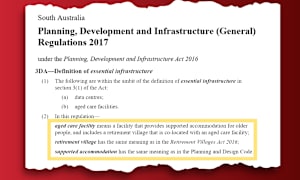With the Federal Government’s 200 direct care minute requirement set to start from Sunday, new research suggests that while higher wages are working to attract aged care staff, the residential care sector will miss its target to provide 40 minutes of Registered Nurse time per resident.
Based on back-of-envelope calculations from the additional five minutes of RN time required for each resident, an additional 3,200 RNs are required across the sector to meet the 40 minutes.
Figures from SEEK published in The Australian this week show that advertised salaries rose by 4.8%, just below inflation at 4.9%, primarily driven by the Fair Work Commission (FWC)’s wage increases.
Wages in the aged care and disability support sub-industry increased 8.9% in the year to August on the back of the 1 July 15% wage rise for direct care workers and the 5.75% increase in the minimum wage.
However, aged care providers are still struggling to recruit RNs because of the lack of supply in Australia.
Recent RN increase driven by agency staff
A 15-page report released by Australia’s largest Not For Profit provider Bolton Clarke this week ahead of its appearance at the Joint Parliamentary Committee on Migration yesterday found the rate of increased staffing needs to “accelerate dramatically” to meet the 1 October staffing targets.
The report shows that while residential care providers have increased their supply of RNs slightly from FY22 to the third quarter of FY23, much of the recent increase has been through agency staffing.
 Tim Hicks (pictured), Bolton Clarke’s Executive General Manager Policy & Advocacy, told The Weekly SOURCE that the current nursing workforce is “fundamentally capped” by the number of RNs in the country.
Tim Hicks (pictured), Bolton Clarke’s Executive General Manager Policy & Advocacy, told The Weekly SOURCE that the current nursing workforce is “fundamentally capped” by the number of RNs in the country.
“Employment is growing, but job ads are just going absolutely crazy,” he said. “That’s an indication that the shortage is on the supply side. People are trying to recruit but there’s simply not enough nurses in the country to fill all the vacancies.”
The result? Providers have no choice but to turn to agency staff which increases their staffing costs or poach nurses from other organisations.
Is there a solution?
Currently migration is positioned as the last resort to attract aged care staff, requiring providers to jump through many hoops.
But a smoother process for visa processing and accreditation, and partnerships with other countries could help to ease nurse shortages.
Tim pointed to a bilateral partnership between Germany and the Philippines Government which sees the advanced economy help to fund the number of nurses being trained in order to increase the global supply of nurses as well as address domestic shortages.
Longer-term, Australia needs to improve its domestic pipeline of nurses. But in the short-term, migration is the only cost-effective option for Government and operators.
The SOURCE: Aged care providers that are bringing in nurses from overseas are contributing to the public good by boosting supply across the country. Can the Government simplify this process?










